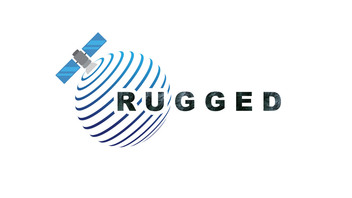

Yes, it has been used in successful operational missions.
Rugged is used operationally in the Image Processing Facility of the Sentinel 2 European Space Agency (ESA) mission, which was launched in June 2015.
Rugged is used in the frame of ESA Scientific Exploitation of Operational Missions (SEOM), to calculate topographic shadow masks for Sentinel 2 products.
Rugged has been used to validate Airbus Defence and Space (ADS) geolocation library.
Rugged has been used as a Research Library by the French Space Agency (CNES) for refinement studies for VHR push broom sensors (Pleiades).
Yes, Rugged has been validated, by comparison with other image processing systems.
Note that as Rugged takes into account some effects that may not be considered by other systems, validation implies careful configuration and analysis of discrepancies. Some differences come from missing correction in other systems, like the Δδψ and Δδε precession/nutation correction parameters, or the light time correction, or the aberration of light correction, or the non-straight line nature of line-of-sight in geodetic space … These differences are mostly dealt with by disabling Rugged correction to match the other systems (only for test purposes, of course, the corrections should be enabled for operational use!). Some differences come from different models like precession and nutation compliant to latest IERS conventions, or different Earth frames. These differences are mostly dealt with by configuring Rugged to use the same legacy models (these legacy models like for example TOD and MOD frames are available for consistency with existing systems).
Rugged relies on the Orekit space flight dynamics library and on Hipparchus mathematical libraries. Both libraries are free software libraries distributed under the terms of the Apache Software License version 2.0.
This error is probably the most frequent one, or at least it's the first one new users encounter.
Rugged relies on the Orekit library to perform all space flight related computation (typically frames transforms). This library in turn needs some external data to be loaded in order to run. This includes UTC-TAI history for leap seconds handling, Earth Orientation Parameters for transforms to and from Earth fixed frames, or planetary ephemerides for Sun direction, for example.
The error message “no IERS UTC-TAI history data loaded” means the UTC-TAI history file which is used for leap seconds management was not found. As leap seconds are used each time a UTC date is used, this message is often seen very early and is the first one unsuspecting users experience. It often means the user forgot to configure Orekit to load data. Orekit supports by default either the IERS UTC-TAI.history file or the USNO tai-utc.dat file. If either file is found in the Orekit configuration, it will be automatically loaded and the message should not appear.
Configuring data loading is explained in the configuration page. For a start, the simplest configuration
is to download the orekit-data-master.zip
file from the forge, to unzip it anywhere you want, rename the orekit-data-master folder that will be created
into orekit-data and add the following lines at the start of your program:
File orekitData = new File("/path/to/the/folder/orekit-data");
DataProvidersManager manager = DataContext.getDefault().getDataProvidersManager();
manager.addProvider(new DirectoryCrawler(orekitData));
Using a folder allows one to change the data in it after the initial download, e.g., adding new EOP files as they are published by IERS. Updating the content of the orekit-data remains the responsibility of the user.